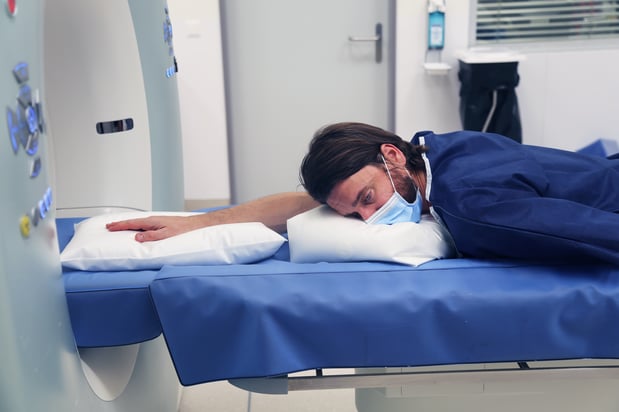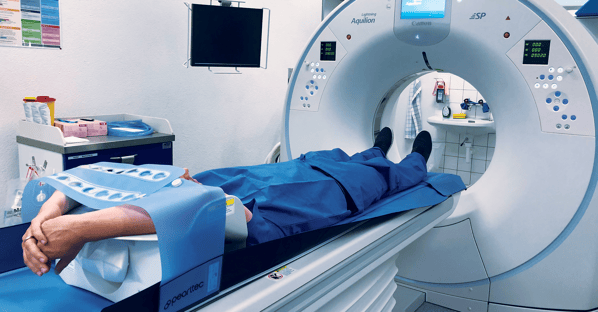Accurate diagnostic imaging is the cornerstone of modern healthcare, aiding in the timely and precise diagnosis of various medical conditions. Optimal patient positioning plays a pivotal role in radiology, influencing image quality, diagnostic accuracy, and patient safety/well-being.
Radiological examinations are indispensable tools for diagnosing and monitoring medical conditions. Achieving high-quality images is essential for accurate diagnosis, treatment planning, and overall patient management. Optimal patient positioning is a fundamental aspect of this process, as it directly affects image quality, proper anatomical visualization, and the ability to detect pathology. Inadequate positioning can lead to pathological misinterpretation, unnecessary additional imaging procedures or repetition, loss of revenue, patient anxiety and/or unnecessary pain, and increased radiation exposure. Therefore, understanding and implementing precise patient positioning techniques is crucial for radiology departments aiming to provide exceptional patient care and diagnostic accuracy.

Challenges
There are several challenges when positioning a patient for a radiological examination and they can largely vary from patient to patient and modality to modality. The most common hindrance to an optimal patient positioning is their poor physical condition and their emotional state. Patients more often than not are nervous about their diagnosis, about the unknown of having a scan for the first time, or about what might happen during said scan (i.e. noise and/or pain). When talking about MRI, we have to add the fact that claustrophobia will also play a big role on the increment of anxiety and apprehension of having a scan.
On top of that, some body parts require a lot of carefully thought positioning in order to perfectly showcase the anatomy of interest, and reduce risks associated with the actual scanners, such as radiation on CT and X-rays, and burns on MRI.
These challenges, call for some external support when perfectly positioning our patients on our scanners. Invariably, textbook patient position cannot be achieved without proper pads, pillows, and cushions being used in crucial locations, in order to reduce pressure points and present patients that so needed comfort to undertake demanding imaging procedures that can range in time from a few minutes to a couple of hours.
Benefits
One of the main benefits of correct positioning with adjuncts and pads, is the impact on overall image quality. Patient positioning influences the correct and precise depiction of anatomical structures and pathological findings in radiographic images, and if done without adjuncts, most of the times the patient will encounter some difficulties to stay immobile and comfortable. Proper alignment and stabilization of the patient's body part under examination ensure optimal visualization, reducing artifacts and distortions that may hinder accurate diagnosis. Improved image quality leads to more precise evaluations, better-informed clinical decisions, and enhanced patient treatment outcomes. Proper patient positioning is directly linked to better image quality and faster scanning outcomes as it allows patients to rest comfortably on the scanner tables and have their imaging done quickly and painlessly.
Radiation Safety
On another note, optimal patient positioning also directly contributes to radiation dose optimization in CT, X-ray, and other radiation inducting modalities. Correct positioning allows for accurate collimation, minimizing the radiation field to the area of interest. Also, correct positioning with ergonomic padding allows for better positioning which permits the radiographers to acquire images in different angles and planes that are usually uncomfortable and demanding for the patients.
This practice reduces unnecessary radiation exposure to surrounding healthy tissues, vital organs, and adjacent structures. By adhering to appropriate positioning protocols, radiographers can maintain image quality while limiting radiation dose, safeguarding patient health and well-being.
Consistent Workflow Standards
Good positioning adjuncts like pads and cushions, are then key on the standardisation of positioning protocols and technologist training. Consistency in patient positioning is crucial for achieving reliable and reproducible imaging results. Establishing standardised positioning protocols across radiology departments ensures uniformity and minimises variations in practice that are often common when there’s a vast array of technicians working within the same department. Technologist training and continuing education are essential components of this effort; equipping radiographers with the skills, knowledge, and tools needed to accurately position patients, adapt to diverse clinical scenarios, and uphold the highest standards of image quality and patient safety.

Patient collaboration
However, it is not always only about tech training and education. Patient effective communication, careful education, and motivated engagement are also of vital importance. Empowering patients with information about the importance of proper positioning, and the usefulness of certain pads and cushions on the correct placement of anatomical structures in the imaging scanners, enhances their cooperation and understanding during radiological examinations. Educated patients are more likely to adhere to positioning instructions, facilitating the acquisition of high-quality images while reducing the likelihood of re-imaging due to positioning errors on X-rays and CT’s, and motion artifacts in MRI. Clear communication between technicians and patients fosters a collaborative environment, resulting in improved imaging outcomes and a positive patient experience.
Conclusion
In conclusion, optimal patient positioning is an indispensable component of radiological practice, exerting a profound influence on image quality, diagnostic accuracy, and radiation dose optimization. Perfect positioning is often a challenging but essential component of the scanning activity, as patients are often in pain, confused, anxious or simply not comfortable. This is where the correct use of pads and cushions play a vital role in accommodating the patients by mitigating their pains, anxieties and fears. By implementing standardized positioning protocols, investing in proper padding, and in technologist training, allied with prioritization of patient education, radiology departments can elevate the quality of diagnostic imaging, reduce unnecessary repeated images, and ultimately enhance patient care. A commitment to precise patient positioning underscores the dedication of radiology professionals to delivering accurate diagnoses and optimal healthcare outcomes.
Author: Samuel Oliveira
Samuel Oliveira is a passionate radiology professional, MRI safety officer, opinion leader, and innovator. As the founder and CEO of Everything MRI, as well as the founder of the London MRI Leads Group, he is committed to changing and improving the MRI world step by step.
